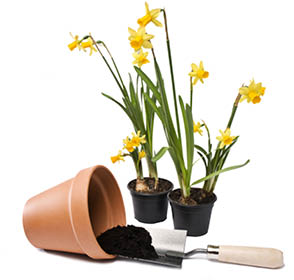
Spring has finally sprung, lambs are gamboling in the fields, daffodils popping up from their wintery beds and the first few blossoms are appearing on trees. My local pond is alive with tadpoles, and with fascinated children observing them each week as they develop slowly into frogs.
As teachers start planning lessons on the new life springing, buzzing and growing up all around us, I thought I’d share a few resources with you:
An old favourite, but what could be nicer than growing sunflowers? The seeds are nice and big for little fingers, the plants grow well and can be measured each week providing a nice link to mathematics. Cross-curricular links are many such as art projects drawing or making sunflowers, all of which make for a wonderfully colourful classroom.
While British astronaut Tim Peake is still in space, why not use space as a context for investigating plant growth? This resource, asks children to design an Astro Garden, investigate how plants may grow on Mars, plan a garden on Earth to to feed an astronaut or write an article or poem to show how people are dependent on plants for their survival in space as on Earth.
Sorting and Sprouting helps children understand the role of seeds in the life cycle of a plant, with children to observing and sorting a variety of seeds then investigating the conditions that are required for germination. It also looks at a real life plant hunter working with seeds. It is worth pointing out that many children think that to be alive something must move, observing the seeds as they grow into plants may help children see that even though the seeds did not move they are alive and just dormant awaiting the conditions for growth.
Time lapse is a great way of showing a seed germinating and the results of a short film made with children would really help them see how seeds begin to grow into mature plants. This video shows how to make a time lapse film in a clear and easy way using a smart phone. Once mastered you can apply this technique to other areas of the science curriculum.
How many have you seen any bees yet? I’ve seen seven this year so far and spent a while identifying the type of bumble bee they were? As bees are necessary for the pollination of many food crops, identifying bees and bee pollinated plants is really important. Save Our Bees contains nine activities, including role playing the growth and decline in bee populations showing the factors involved and making bee puppets. You can also get involved in a national survey on bees, running from 19 May to 30 June 2016.
When learning about life cycles try one of these nine activities including: modelling insect pollination, observing tadpole development, carrying out worm surveys, making a butterfly feeder or creating an insect garden.
Finally, if your school is lucky enough to have a pond try some pond dipping activities or make your own mini pond and observe the wildlife who come to visit. When finding out about tadpoles and frogs, why not challenge children to solve this mathematical problem involving different coloured frogs changing place? This fun activity, is also a great way of developing systematic recording and reasoning.
